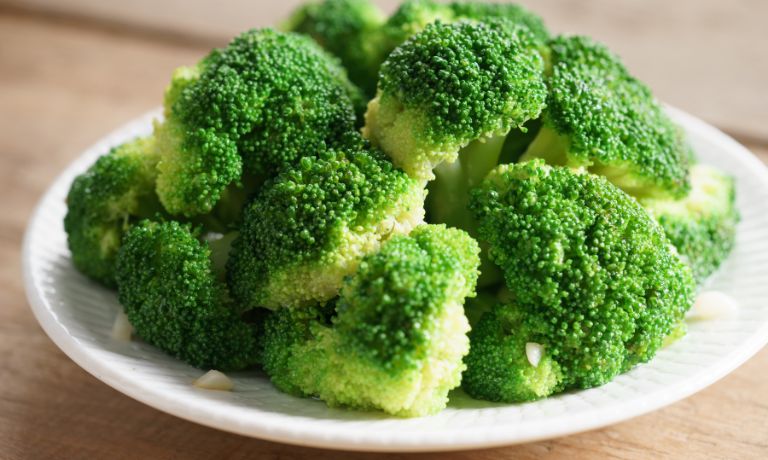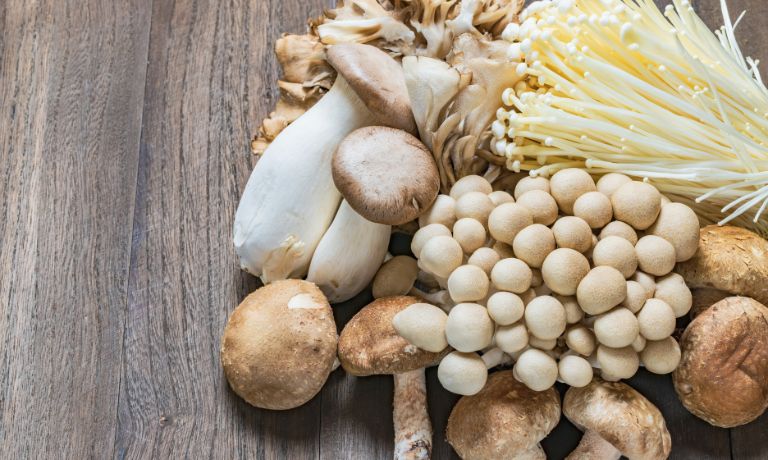Love the idea of a healthier substitute for your favorite meals but don’t love the taste and texture of cauliflower? Then you’re in luck!
Here’s an ultimate guide for creating delicious cauliflower substitutes to help you create healthy, nutritious dishes without compromising flavor.
We’ll show you how to use other vegetables and grains as replacements in recipes where cauliflower might not be up to par.
Whether vegan, vegetarian, or just looking for variety in your diet, this guide offers something for everyone!
Get ready to eat smarter and more nutritiously – with our list of the best plain-tasting yet undeniably flavourful options to substitute for cauliflower.
What Is Cauliflower?
Cauliflower is a cruciferous vegetable of the Brassica family, which includes broccoli, cabbage and Brussels sprouts.
It has a white head or “curd” comprising tightly packed small flower buds.
Its texture can vary from slightly crunchy to soft and mushy depending on its maturity at harvest time and how it’s cooked.
Cauliflower is high in vitamin C and fiber and is a good source of protein and folate.
It’s also low in calories compared to many other vegetables, which makes it a great addition to any diet.
Cauliflower can be enjoyed raw or cooked, with its mild flavor allowing it to be used as an ingredient in many dishes.
It can be roasted, grilled, steamed or sautéed and used in stir-fry, risotto, salads and more.
Its mild flavor makes it a great substitute for starchy white potatoes and rice when looking for a lower-calorie option.
Cauliflower can be transformed into a low-carbohydrate pizza base or mashed potato alternative when blended and cooked until soft.

Substitutes For Cauliflower
If you’re looking for healthy alternatives to cauliflower, several options are available.
Most of these substitutes can provide similar levels of nutrition and flavor.
Asparagus
Asparagus can be used as a substitute for cauliflower in many recipes.
Asparagus is a vegetable belonging to the lily family, which has been enjoyed as a food for centuries.
It’s one of the most versatile vegetables and can be cooked in many ways.
Asparagus can be steamed, boiled, roasted, grilled, sautéed or stir-fried and used in soups, salads, casseroles, and side dishes.
It is also a popular addition to omelets and frittatas.
The flavor of asparagus is slightly grassy and nutty, with a hint of bitterness that comes out when it’s cooked too long.
It pairs well with many flavors such as garlic, lemon, butter, Parmesan cheese, olive oil, herbs and spices.
Asparagus is also a great source of dietary fiber, vitamins and minerals, making it a healthy food choice.

Broccoli
Broccoli is a popular vegetable that belongs to the cabbage family. It has green or purple florets on its head and thick, edible stems.
It can be used raw in salads, added to stir-fries and soups, steamed with other veggies, roasted with oils and spices for a crispy texture, or even used as an ingredient in casseroles.
Broccoli is packed with essential vitamins, minerals and antioxidants that can help promote good health.
In addition to its nutritional benefits, broccoli adds flavor, texture and bright color to dishes.
With its mild, slightly sweet flavor and crunchy texture, it can make a great addition to many meals.

Cabbage
Cabbage is a leafy vegetable that is a member of the cruciferous family. It has many varieties, including green, red, savoy, and Napa.
Cabbage can be used as a substitute for cauliflower in many dishes, as both vegetables have a similar texture and flavor when cooked.
When used in cooking, cabbage can be boiled, steamed, stir-fried, and even used in soups or stews.
It can be added to salads or shredded for coleslaw in its raw form.
Cabbage also pairs well with other vegetables like carrots, onions, and potatoes.
Cabbage is a great source of dietary fiber and is low in calories.
It also contains vitamins A, C, K, B6, and folate. It also contains a good amount of potassium, manganese, calcium, magnesium, and iron.

Legumes
Legumes are a broad term that refers to plants in the Fabaceae (or pea) family, which includes beans, lentils, peas, peanuts and other related crops.
They are an important plant-based source of protein and fiber for humans and animals alike.
In cooking, legumes can be used in several different ways.
They can be boiled and mashed for dishes such as hummus or refried beans, roasted for added crunch, or cooked into soups and stews.
We can grind legumes into flour for baking, sprout to create salads and sandwiches, or even eat raw from the pod.
They can also be fermented to create a variety of condiments, such as soy sauce or miso paste.

Mushroom
Mushroom is a fungi that can be eaten and used in various dishes.
The most common types are button, portobello, shiitake, enoki and oyster mushrooms.
Mushrooms have an earthy taste that adds depth to any cooked dish.
They can be eaten raw and cooked in various ways, such as sautéed, stir-fried, grilled, roasted and even pickled.
They pair well with vegetables in salads or as a side dish. They can also be used to make vegetarian dishes like soups and stews.
Mushrooms are high in vitamins B2 and D, selenium and zinc, making them a healthy food choice.
To get the most out of mushrooms, purchase them fresh and store them in the refrigerator until you are ready to use them.

Potato
Potato is a widely popular starchy root vegetable and has been an integral part of the human diet for centuries.
It can be cooked in various ways, including baking, frying, boiling, mashing, or roasting.
Potatoes are also used to make chips, French fries, mashed potatoes, hash browns and other dishes.
Additionally, potatoes can be used to thicken soups and stews and make gnocchi and dumplings.
Potato dishes are popular in almost every cuisine worldwide, making them a versatile ingredient that can be used in countless recipes.

Sweet Potato
Sweet potatoes are root vegetables that typically have reddish brown or copper skin and orange, yellow, or white flesh.
They come in many shapes and sizes, including wedges, round discs, and long cylinders.
Sweet potatoes are often used as a substitute for other starchy foods like white potatoes or yams.
They can be boiled, mashed, baked, fried, or steamed.
Sweet potatoes can also be used in soups, stews, curries, and salads.
They pair well with flavors like cinnamon and nutmeg and savory herbs and spices like garlic and onion powder.

Zucchini
Zucchini, also known as courgette, is a member of the summer squash family that has a mild flavor and can be cooked in many different ways.
It is usually green in color but can also come in yellow or white varieties.
Zucchini is typically eaten raw or prepared in salads, grated into soup, fried or sautéed, roasted, or baked into bread and muffins.
It is a great source of fiber and Vitamin A and C, making it a healthy addition to any diet.
Zucchini can also be used as an alternative to pasta, either shredded in place of noodles or spiralized into “zoodles” for a delicious and nutritious meal.

FAQs
Can Cauliflower Be Substituted For Cabbage?
Yes, cauliflower can be substituted for cabbage in many recipes.
Cauliflower is low in calories and has a mild flavor that can work well in certain dishes.
Can Broccoli Replace Cauliflower?
Yes, broccoli can be used to replace cauliflower in most recipes.
While the flavors may differ, they are similar enough to work in many dishes.
Can You Substitute Legumes For Cauliflower?
Yes, legumes such as chickpeas, black beans, and lentils can all be used as substitutes for cauliflower in many recipes.
Conclusion
Cauliflower is a delicious and nutritious vegetable that can be used in many dishes.
However, several options to substitute for cauliflower offer added benefits such as higher nutrient content, easier preparation, and unique flavors.
These substitutes include cabbage, legume, mushroom, sweet potato, and zucchini.
Incorporating these ingredients into your cooking routine can create delicious and nutritious meals that satisfy your taste buds.

